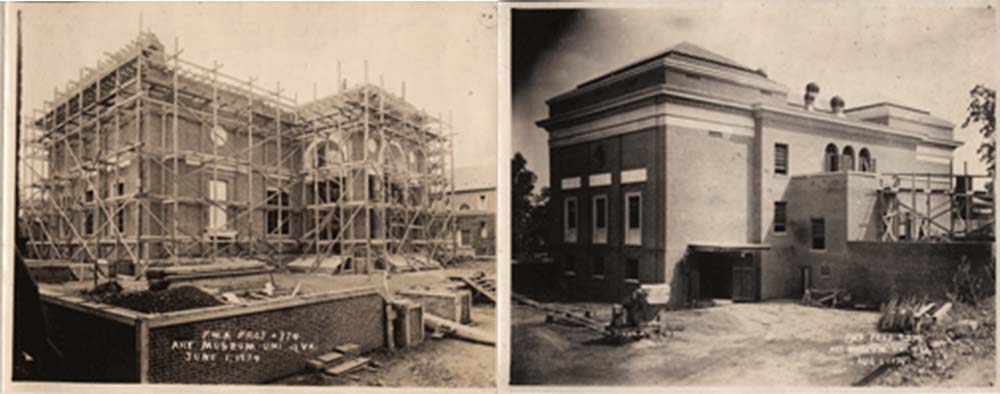Temporary Exhibitions
Each year the Museum presents a selection of exhibitions drawn both from the permanent collection and sources nationwide. The Print Study Gallery allows for the comprehensive study of the Museum's major holdings in prints, drawings, and photography; the Joanne B. Robinson Object Study Gallery provides space for display and research into the wider holdings of the museum.
History
The catalyst for realizing a gallery proper at the University of Virginia occurred in 1929, with a bequest from the estate of Evelyn May Bayly Tiffany. As part of her bequest to the University, Tiffany instructed that $100,000 would be set aside for the construction of an art museum, which would be named for her father. The building was designed by Edmund S. Campbell, then dean of the School of Fine Arts.
Since 1935, the University of Virginia Art Museum has provided students with the life-enhancing experience of great art. The early decades were linked to the School of Fine Arts, predecessor of today’s School of Architecture. The museum functioned as an annex of the School, hosting rotating exhibitions until its activities were halted during World War II. After the war, exhibitions vied with classrooms for existing space, until the museum was effectively suspended in 1965. The building reopened its doors to Grounds and the community in 1974 and has grown exponentially since.
In 2012, Heywood and Cynthia Fralin announced their intention to donate their extensive collection of American art to the University, thus vastly enriching the museum’s holdings. In recognition of this gesture, the Rector and Board of Visitors established the new name as The Fralin Museum of Art. The museum continues its commitment to serving University students, as well as the residents of Charlottesville and the surrounding region.
To accommodate larger, more innovative exhibitions, provide space to showcase the museum’s expanding collection, and adequately support the education programs central to the mission of The Fralin, we are actively assessing the museum’s needs and the future development of its physical space.

